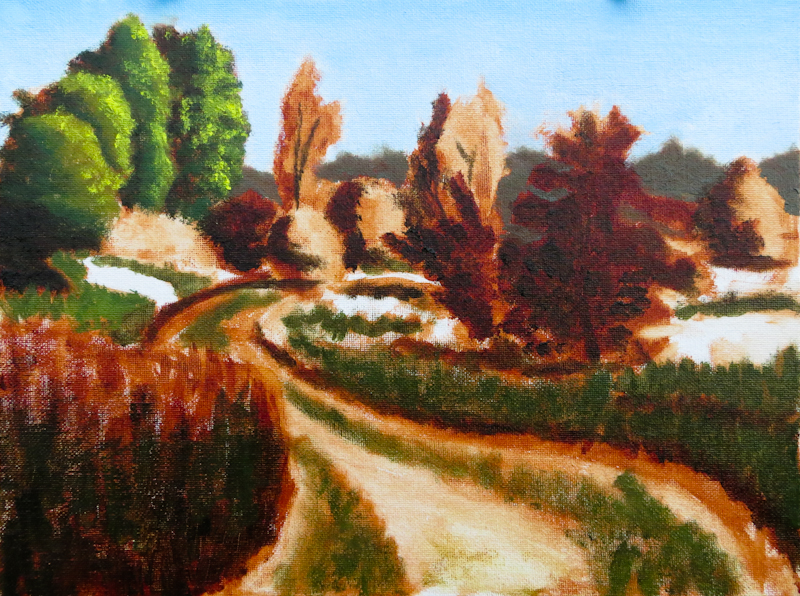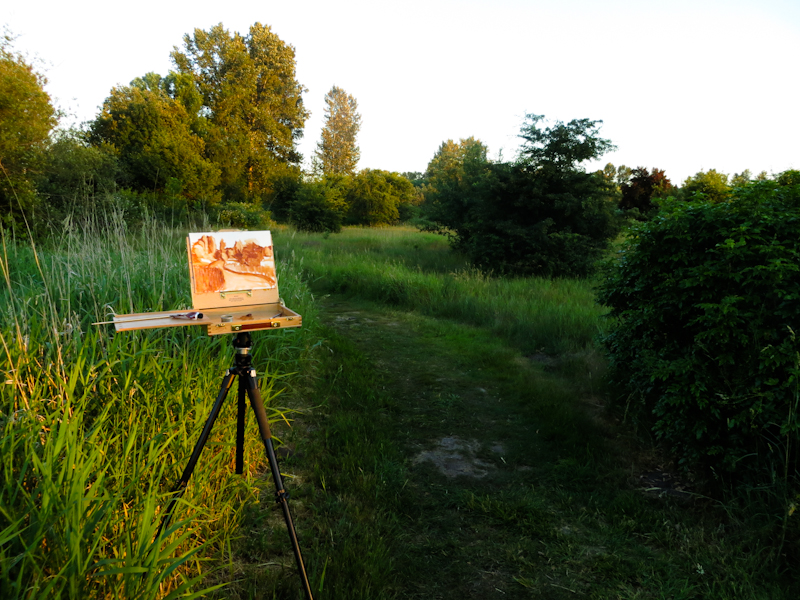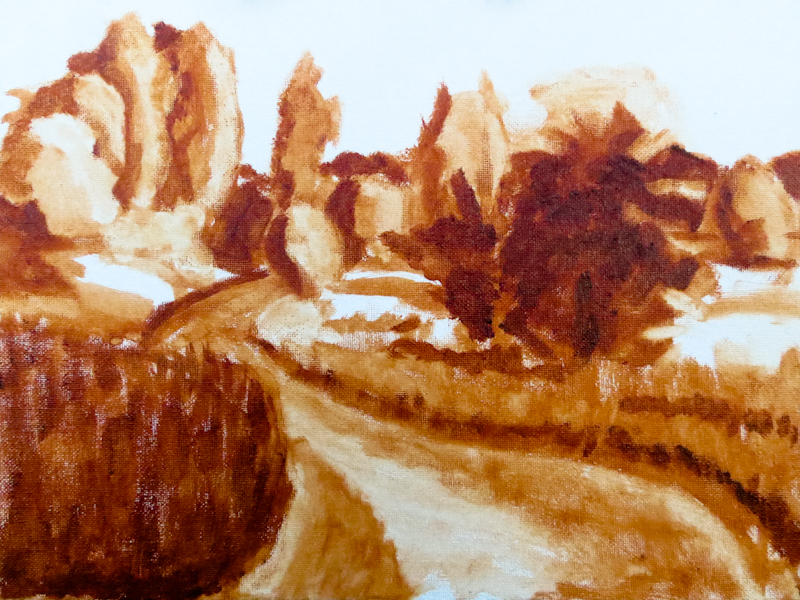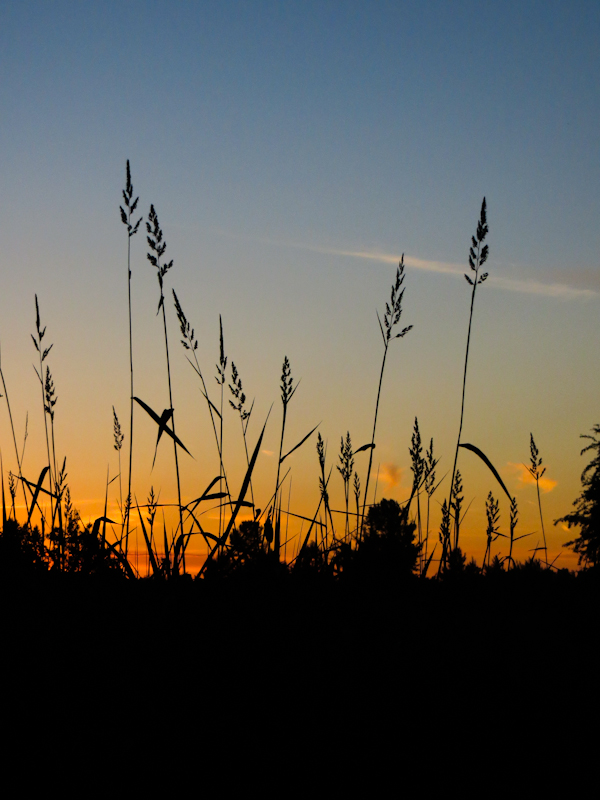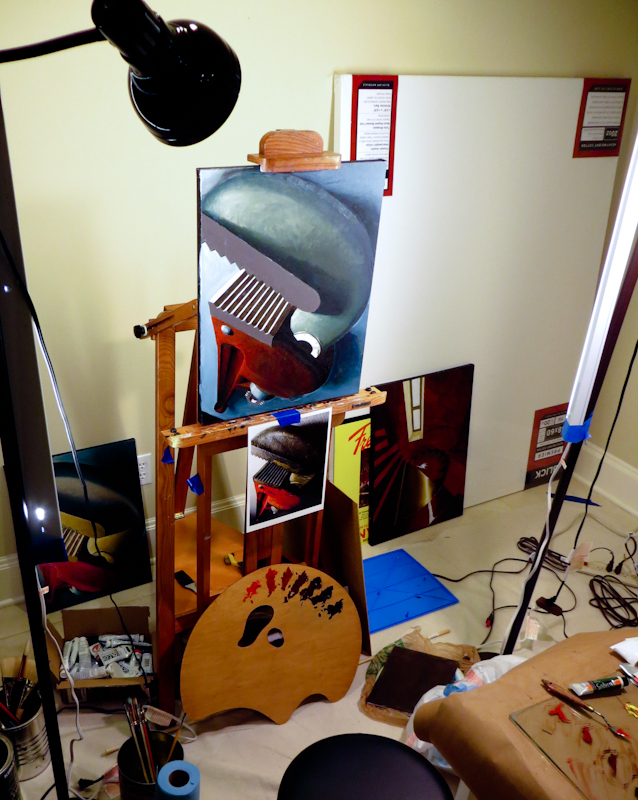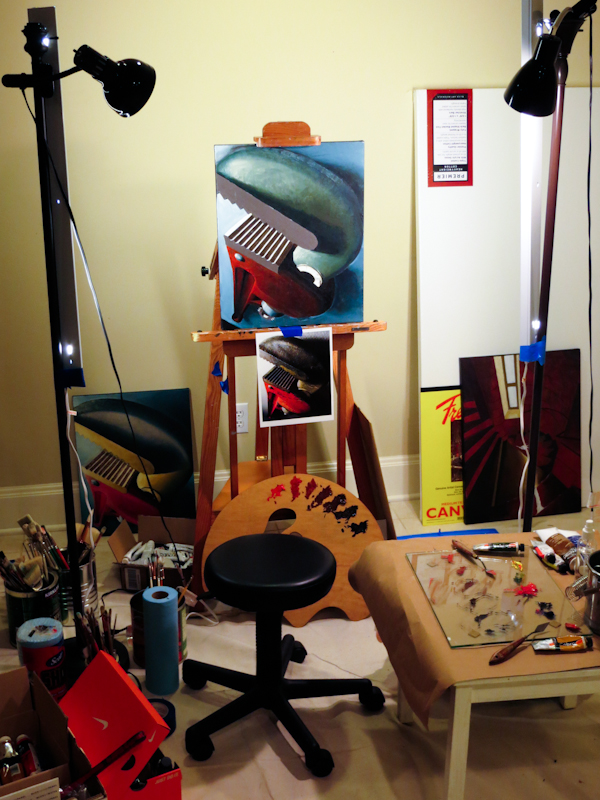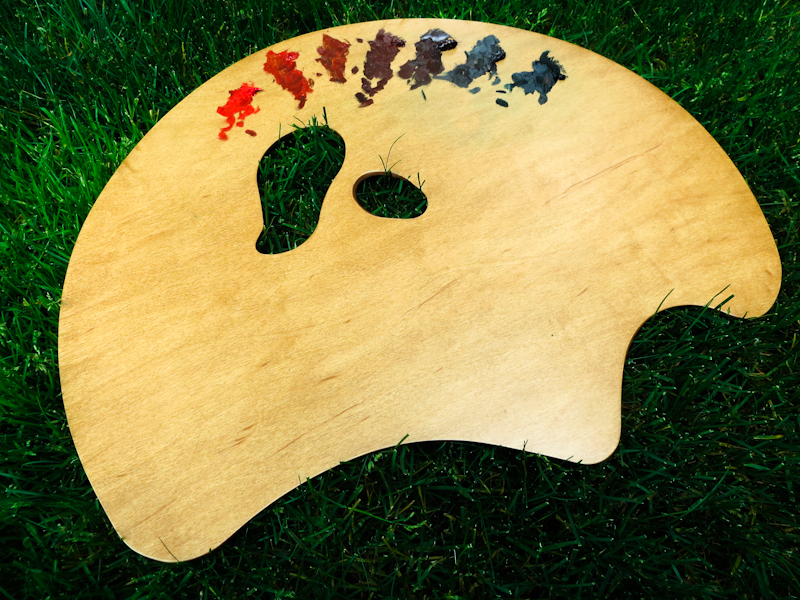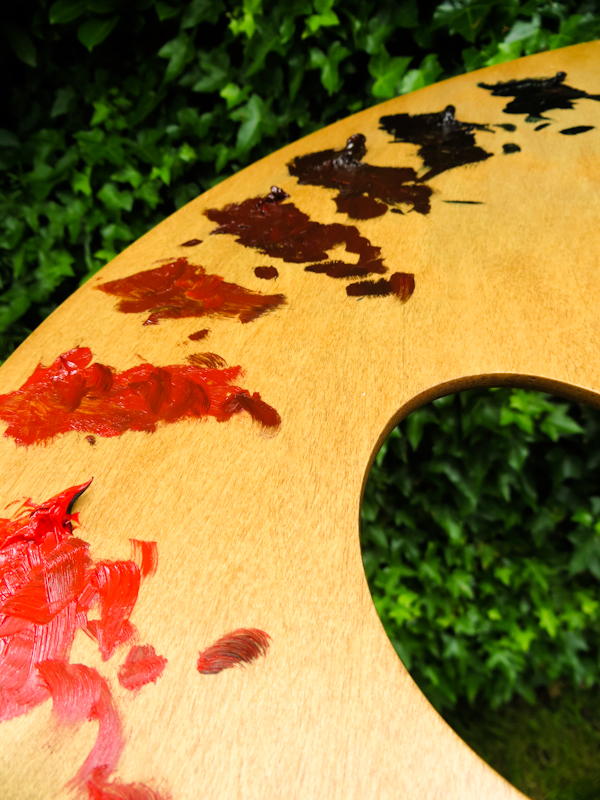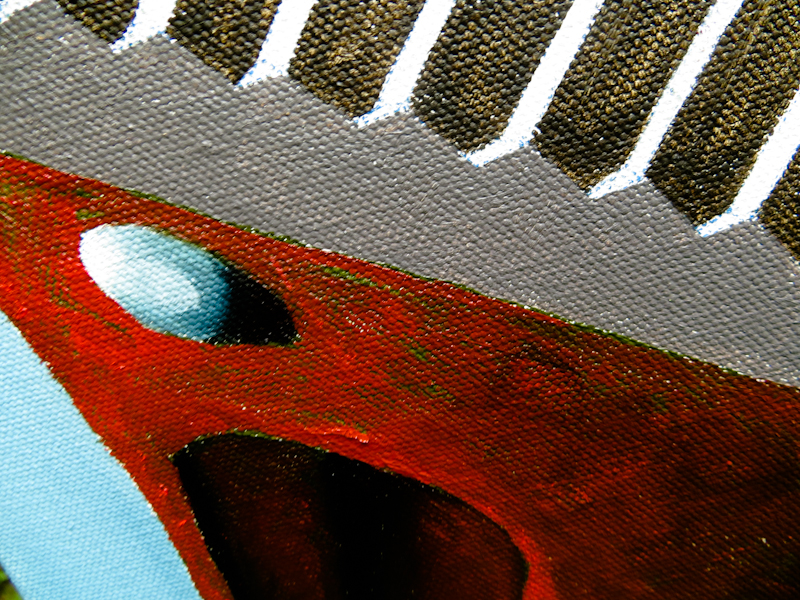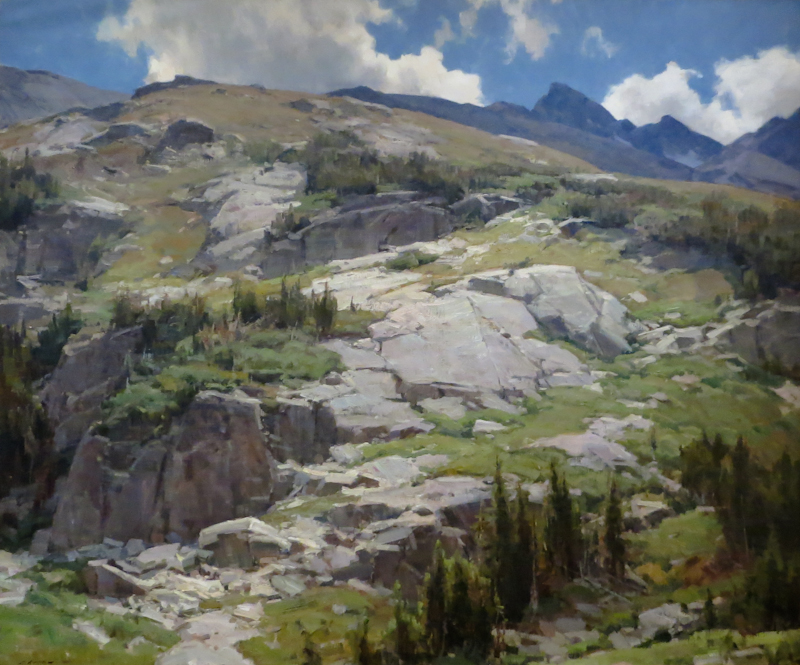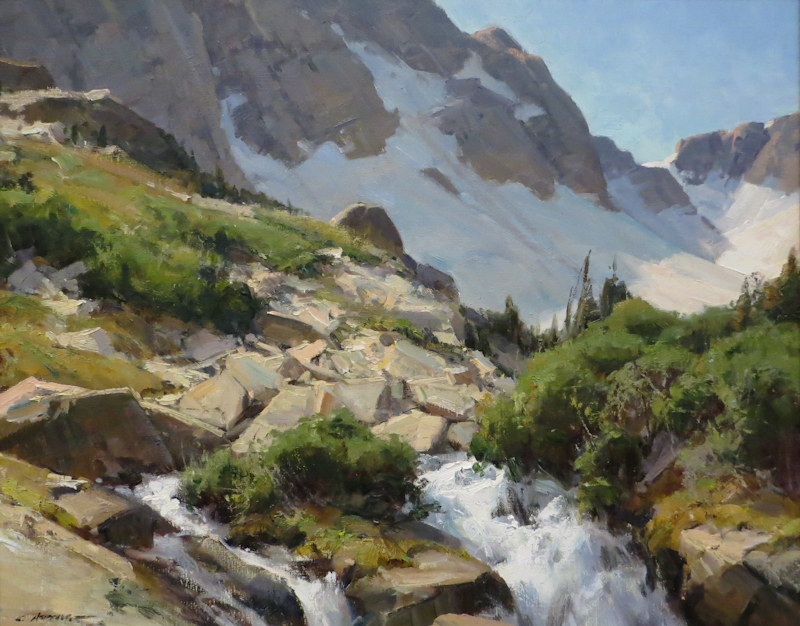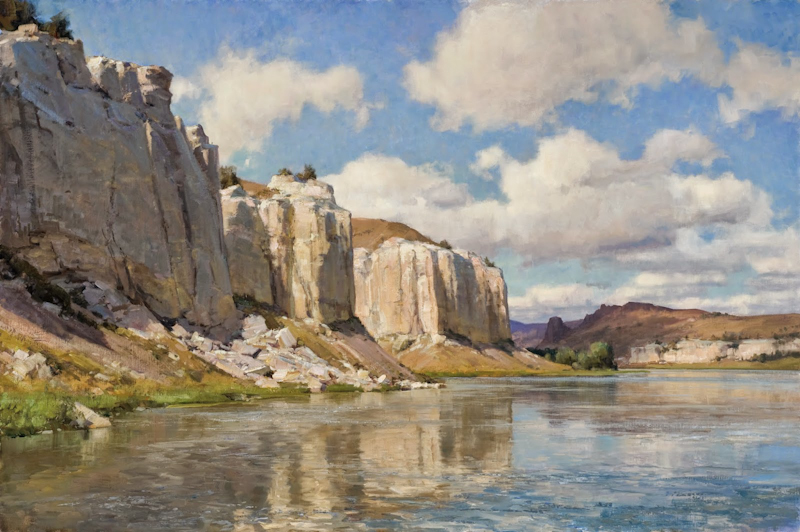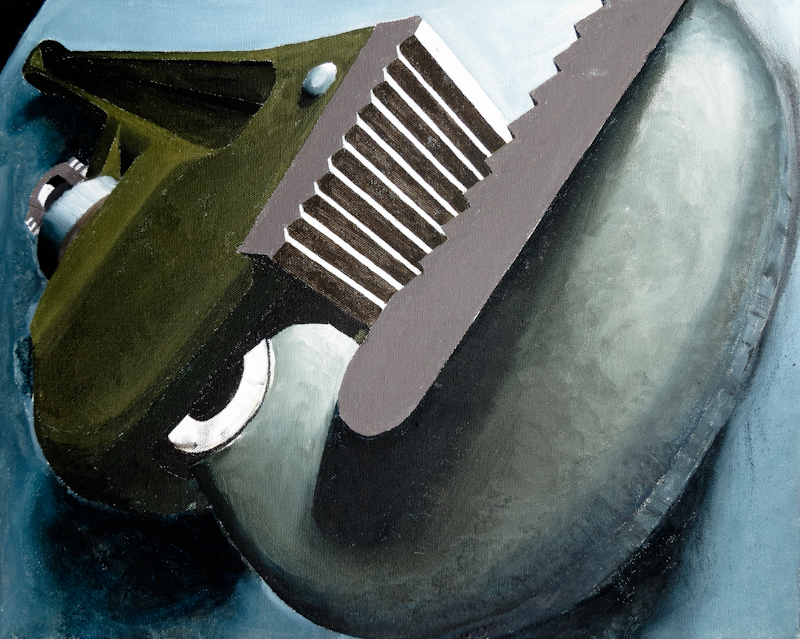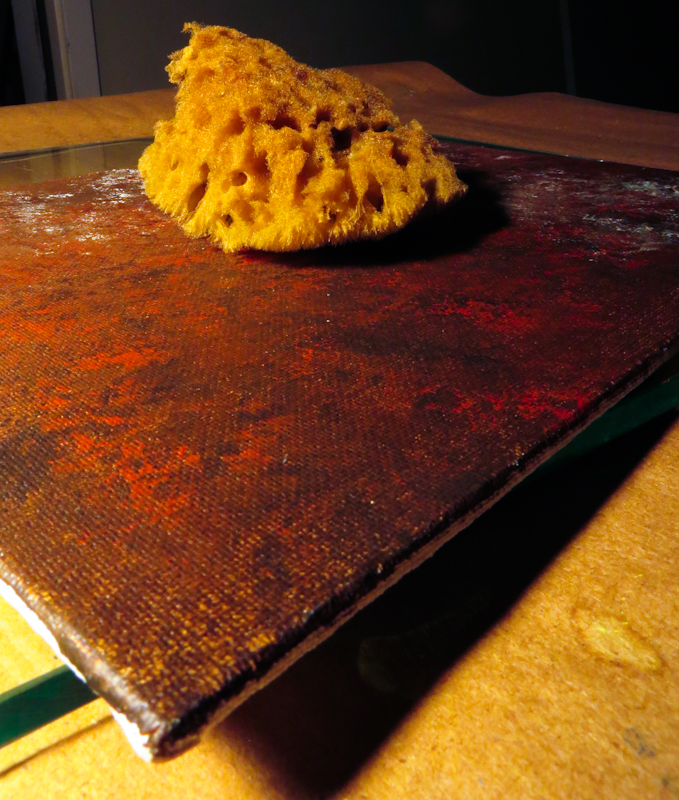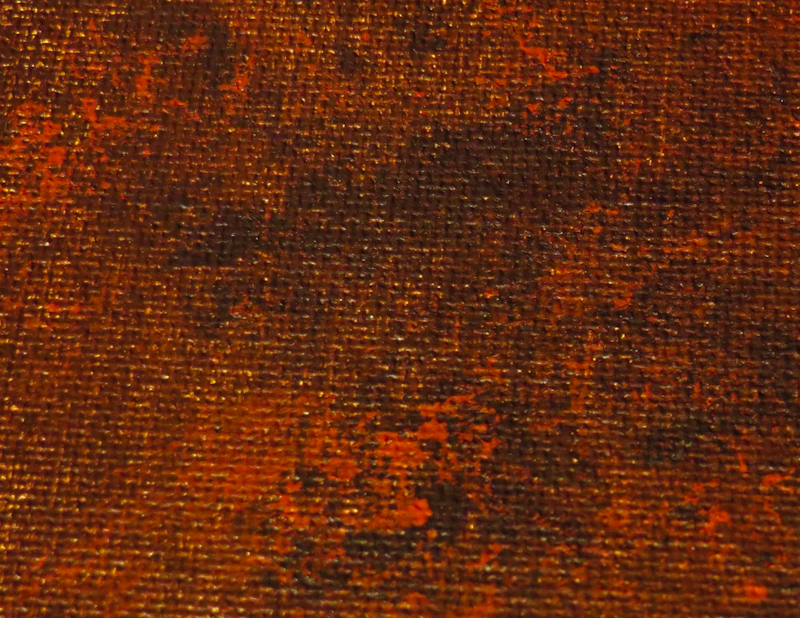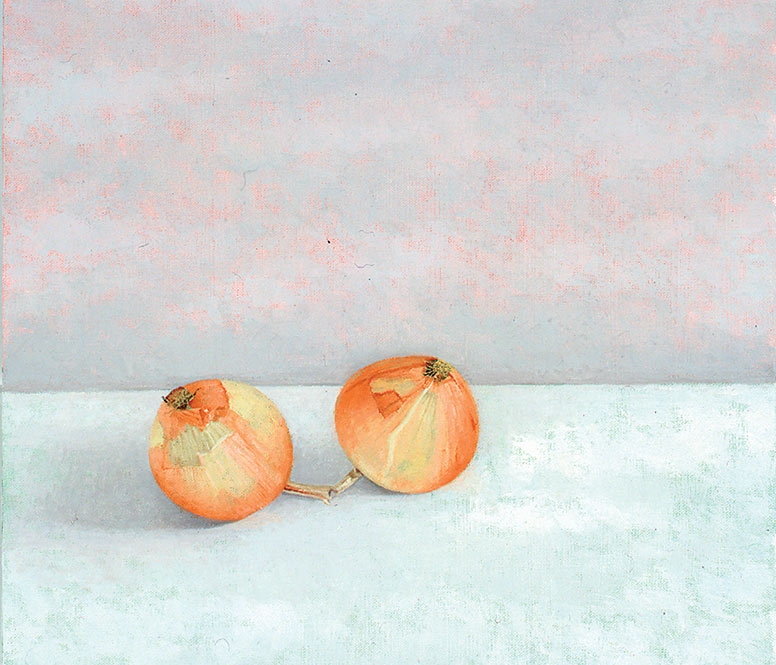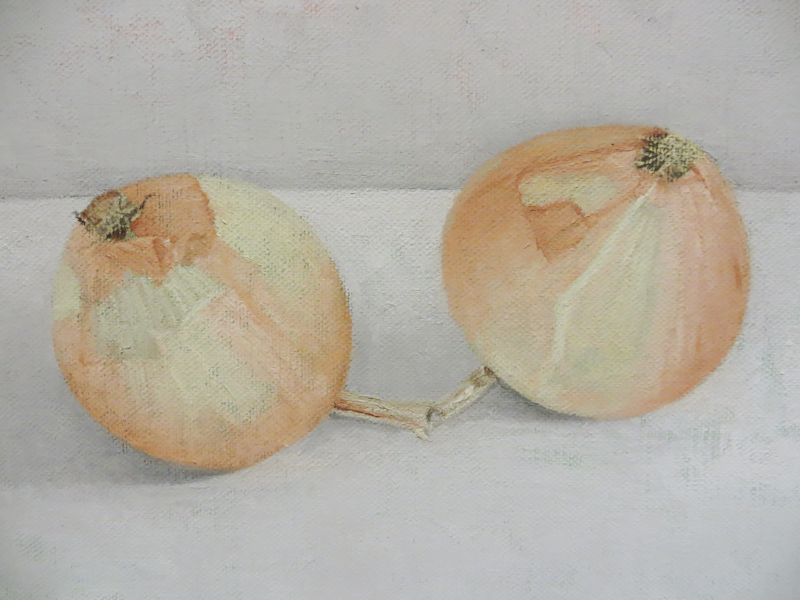Spent about an hour this evening working “en plein air” at Marymoor Park. This time it was hazy and beginning to cloud up, so the colors weren’t as brilliant and the shadows less defined.
I began with the sky, using a mixture of Cerulean Blue and Titanium White. I really wanted to mix in a bit of yellow and red to replicate the warm, sunset air I had seen the night before, but this evening, the light was much cooler because of the clouds, making the visible patches of sky appear blue.
After painting the sky, I mixed in some Raw Umber and painted the distant treeline, taking care to soften the edges. Next up were the trees on the upper left, using a lighter, more saturated green made with Prussian Blue, Yellow Ochre, and Raw Umber. The highlights in the trees are Cadmium Yellow with a bit of Yellow Ochre. At some point I began losing the light and switched to darkening values across the painting with Raw Umber and the green I used for the trees. The plan is to cover some of these darks with lighter leaf and grass textures.


